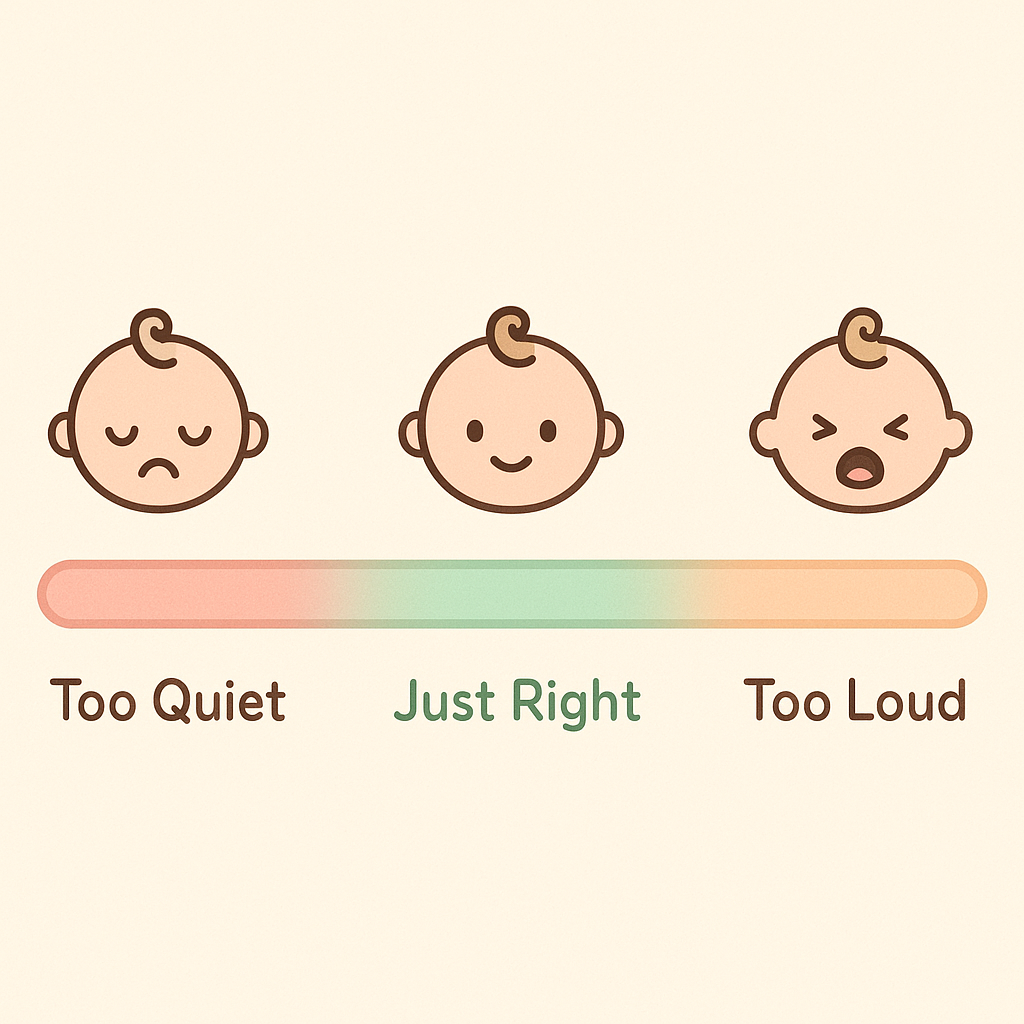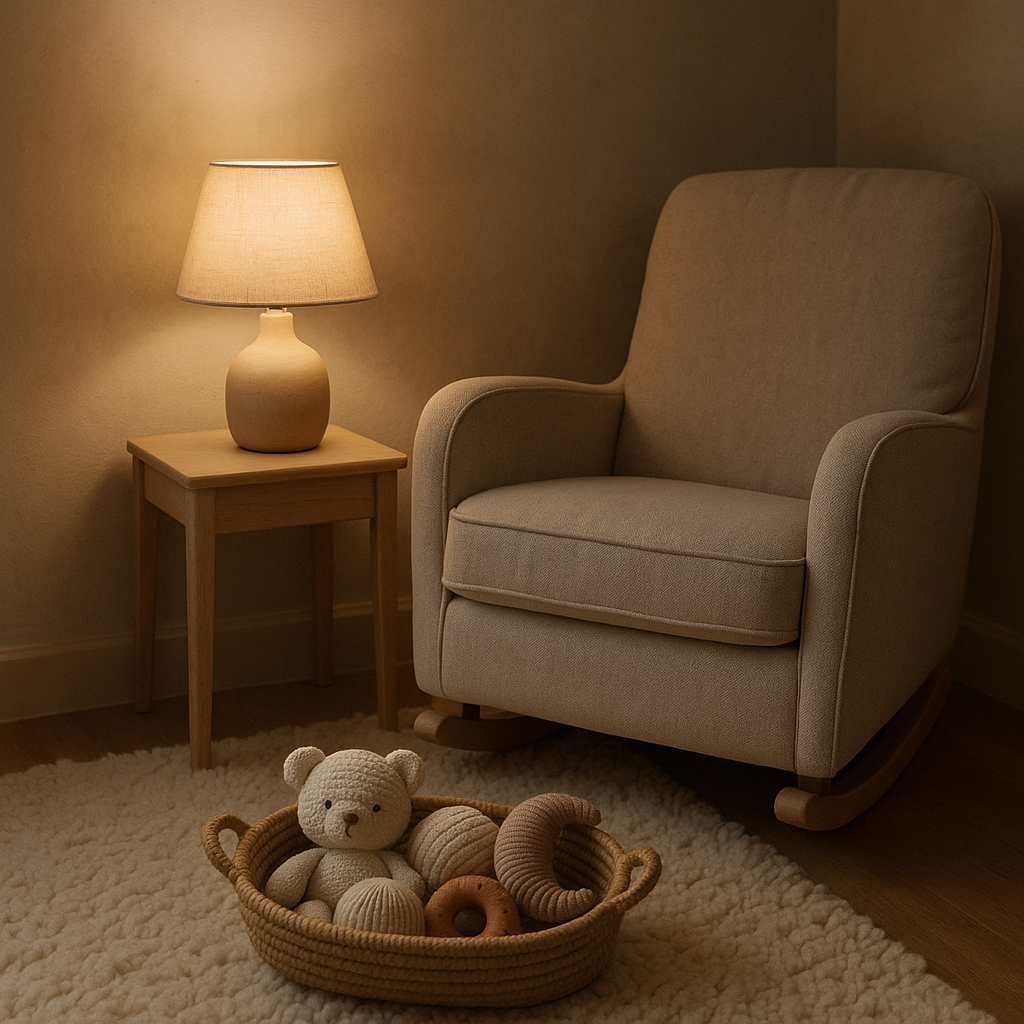A baby’s brain is a powerhouse, forming one million neural connections every second. The right sensory input—like your voice, a gentle touch, or a colorful toy—strengthens these pathways, fueling sleep, mood, and learning. But too much stimulation, or too little, can throw things off, leading to fussiness or disengagement. This guide helps you find the “Goldilocks zone”—not too loud, not too quiet, but just right—to nurture your baby’s neural network without meltdowns. Packed with science-backed tips and real-life examples, it’s your roadmap to creating brain-boosting moments, even on the busiest days.
- What exactly separates overstimulation from boredom in a baby’s brain?
- How can I read my baby’s cues to tell “too much” from “too little” stimulation?
- What does a “Goldilocks” environment look like, and how do I create one?
- What special considerations apply for preemies, highly sensitive, or neuro-divergent babies?
- How can screens tip the balance toward overload—or boredom?
- How do I build a daily rhythm that keeps my baby engaged yet calm?
- Your Top Questions, Answered
- Final Thoughts
What exactly separates overstimulation from boredom in a baby’s brain?
Overstimulation happens when sensory input—like loud noises or bright lights—floods your baby’s brain faster than they can process. Boredom (under-stimulation) is the opposite: too little novelty stalls synapse growth.
During overload, stress hormones such as cortisol spike, the heart rate rises, and babies cry, arch, or avert their gaze. In prolonged monotony, dopamine dips, making babies listless or fussy until something new grabs their attention. Prevent sensory overload in infants.
Typical triggers:
- Overload Signs: Crying, arched back, or looking away, with spiking cortisol and heart rate. Triggers include noisy crowds, flashy toys, or skipped naps.
- Boredom Signs: Listless stares or mild whining, with dipping dopamine. Culprits include unchanging crib views or silent rooms.
For room-by-room ideas on leveling input, see Creating a Brain-Boosting Home for Your Baby.

How can I read my baby’s cues to tell “too much” from “too little” stimulation?
Start with body language. Clenched fists, frantic kicks, or turning away point to overload. Slow, lazy kicks, glazed eyes, or mild whining often signal boredom.
Quick detective flow:
- Fussiness starts—check last nap or feed.
- Look at the scene: chaotic or unchanged?
- Test: dim lights and hush. If calm returns, it was overload. If fussing worsens, add gentle novelty—new song, fresh view.
Research note: overstimulated babies may need 24 hours to clear excess cortisol, so expect some crankiness after a busy day. Newborns overload easily, while 6–9-month-olds crave more novelty.
Age nuances:
- 0–3 months: easy to overload; boredom rare.
- 6–9 months: curiosity surges; boredom cues intensify.
Need help syncing cues with naps? Visit Baby Routines: Do They Boost Brain Development?.
What does a “Goldilocks” environment look like, and how do I create one?
A “Goldilocks” environment is just right—not too stimulating, not too dull—balancing variety and calm to support your baby’s brain growth. Use PACE: Provide variety, Allow calm, Cue-watch, Evolve. See The Wonder Approach to learning
Suggested ratios:
- Newborns: 5–10 minutes active play, then equal or longer quiet time.
- By 6 months: 10–15 minutes play, followed by a reset (cuddle, soft song).
Simple setup tips:
- Sensory zones: a soft-lit corner with a texture basket and a mirror.
- Outdoor micro-adventures: five-minute stroller walks reset the senses.
- Toy rotation rule: display three items; swap daily to avoid clutter chaos.
Parent stress spills over, so pair these tactics with the calm-down tools in Parental Stress: How It Impacts Your Baby’s Brain.

What special considerations apply for preemies, highly sensitive, or neuro-divergent babies?
Preterm infants often react at lower thresholds. NICU studies show weight gain improves when light stays below 30 lux (about a night-light glow) as per World Health Organization. For sensitive or neuro-divergent babies:
- Introduce one new sensation at a time—soft rattle today, bright mobile tomorrow.
- Try deep-pressure cuddles or a snug sleep sack for grounding.
- Red-flags: persistent shutdown after mild input, lack of eye contact by 3 months, or no social smile by 4 months. Consult a pediatric occupational therapist quickly.
For setting realistic milestone timelines, see Realistic Expectations for Your Baby’s Development.
How can screens tip the balance toward overload—or boredom?
Screens can disrupt your baby’s brain balance, causing overstimulation or boredom. Fast-paced cartoons, with eight scene changes per minute, overwhelm a baby’s brain, which processes one scene per second. This lag spikes stress, mimicking ADHD-like fussiness. Conversely, passive screen time under-stimulates, missing the “serve-and-return” interaction babies need for learning, like responding to their coos.
Guidelines:
- Under 18 Months: Use screens only for video chats with family.
- 18–24 Months: Co-view slow-paced shows, talking and playing along.
- Balance: Match every screen minute with real-world play, like stacking blocks.
Example: Lisa, a mom, switched to co-viewing calm shows with her 20-month-old, adding songs afterward. Fussiness dropped, and they bonded.
Find richer offline alternatives in Screen-Free Parenting: Boosting Active Learning.
How do I build a daily rhythm that keeps my baby engaged yet calm?
A daily rhythm with the right mix of play and calm keeps your baby’s brain growing without overwhelm. Use short bursts of engagement—like songs or tummy time—balanced with quiet moments like cuddles or naps. Routines reduce stress and boost development. Here’s a 12-hour flow (adjust for your baby’s age):
| Time | Activity | Goal |
|---|---|---|
| 7 a.m. | Feed + cuddle talk | Warm connection |
| 8 a.m. | Tummy time (5 min) | Motor spark |
| 9 a.m. | Nap | Brain rest |
| 10:30 | Stroller walk | Gentle novelty |
| Noon | Sing & touch-book | Language + texture |
| 1 p.m. | Nap | Recovery |
| 3 p.m. | Toy play (3 items) | Curiosity boost |
| 5 p.m. | Bedtime routine | Wind-down |
Add 90-second “micro-breaks” (snuggles, gazes) between activities. For more, see Daily Routine.
Your Top Questions, Answered
-
Is restlessness boredom or overload?
Change the scene: if calm returns, it was boredom; if fussing stops only in a dim, quiet spot, overload was likely. -
How long should a single activity last?
Newborns: 3–5 minutes. By six months: 10–15 minutes before a pause. Watch cues over the clock. -
Can boredom ever be good?
Yes—brief lulls nurture imagination and self-soothing. Just rotate in new experiences before disengagement turns to distress. -
When should I worry?
Daily meltdowns, shutdowns after mild input, or missed milestones call for a pediatric check-in. Early support makes a big difference.
For fostering self-directed curiosity, explore Baby-Led Play: Why Curiosity Boosts Brain Growth.
Final Thoughts
Balancing stimulation isn’t about perfection; it’s about attentive tweaks—dialing lights, sounds, and activities up or down as your baby “tells” you. Master that dance, and you’ll fuel robust neural growth, deeper sleep, and a calmer home. You’ve got this—one well-timed cuddle and curiosity spark at a time.